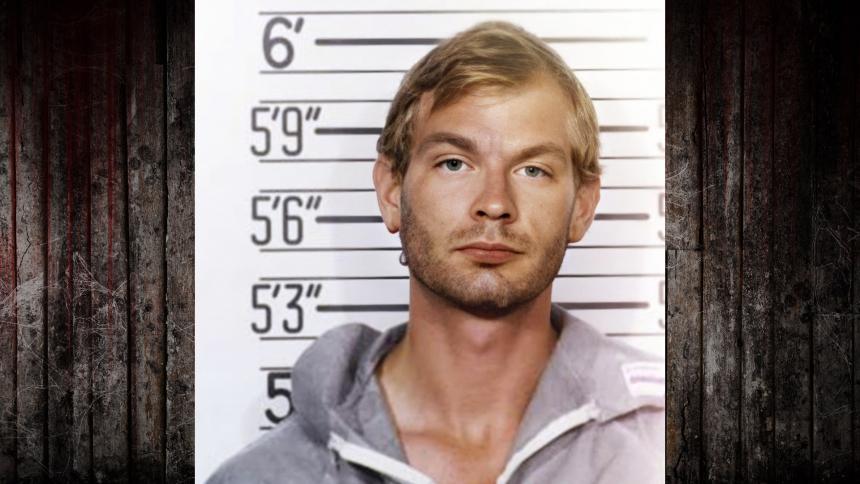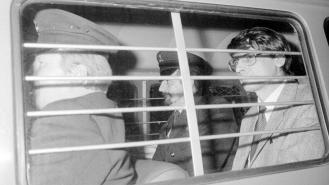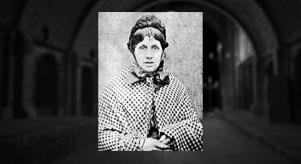
Dahmer and Nilsen: The sinister similarities
In February 1992, a Wisconsin court handed serial killer Jeffrey Dahmer a string of life sentences for some of the most grotesque crimes ever recorded in American history. Though his motivations and modus operandi may have seemed uniquely horrifying to US observers, Dahmer did have a precursor in the form of another murderous necrophile jailed less than a decade earlier: Dennis Nilsen.
The two men inhabited very different worlds. Dahmer was born in Milwaukee in 1960, and carried out his murders in Ohio and Wisconsin. Nilsen was born in an Aberdeenshire port town in 1945, and preyed on his victims while living in London. Yet the parallels in their lives are striking to consider. Both were loners who targeted men and boys within their local gay scenes, both served in the army and were stationed in West Germany, and both killed for the first time in the same year: 1978.
Jeffrey Dahmer's first victim
Dahmer’s first victim was Steven Hicks, an 18-year-old hitchhiker who agreed to go to Dahmer’s house and have some beers. Nilsen’s first victim was 14-year-old Stephen Holmes, whom he met in a pub and invited back to his house to drink and listen to music. Dahmer and Nilsen killed them for identical reasons: they simply didn’t want their companions to leave.
When Dahmer realised that Steven Hicks was preparing to be on his way, he struck him with a barbell and strangled him to death. He then stripped Hicks naked and masturbated at the sight of the corpse, before going on to dissect and gradually dispose of the remains in the weeks that followed. Nilsen, too, decided to strangle his victim, Stephen Holmes, to stop him from leaving. He, too, masturbated over his grisly handiwork, though unlike Dahmer he kept the corpse hidden in his property for several months. Nilsen would later describe this as the “possession of a new kind of flatmate”.
The killings of Steven and Stephen set the template for Dahmer and Nilsen. They slaughtered men and boys, not because they were sexual sadists or derived a particular pleasure from the act of murder itself, but because they wanted complete ownership of males they found attractive.
Killing, generally done by strangulation, was simply a means to an end, providing Dahmer and Nilsen with unresisting bodies they could freely fetishize, dominate, manipulate and “enjoy” – both sexually and otherwise. Dahmer took things to particularly grisly extremes, retaining severed heads, skulls and completed skeletons with the intention of eventually creating an altar of the dead which he imagined as a “place where I could collect my thoughts and feed my obsession”. His compulsions eventually led him to cannibalism. “It was a way of making me feel they were a part of me,” Dahmer later admitted.
Nilsen, by contrast, preferred to treat his victims’ corpses as if they were perfectly passive companions. He would sit them on chairs and talk to them, and sleep next to them in bed. He later described this gruesome parody of romance as “misplaced love”. Unlike Dahmer, his obsession didn’t extend to cannibalism. When asked in a prison interview if he’d ever considered consuming body parts, he replied “Oh, never. I’m strictly a bacon-and-eggs man”.
What drove Dennis Nilsen and Jeffrey Dahmer to kill?
Why did Dahmer and Nilsen feel the pervasive need to fully possess the people they found attractive? It could be argued that it was partly in response to their own feelings of weakness and vulnerability. Nilsen readily admitted that he had a “fear of emotional rejection and failure”, who had been bullied at school and had only one long term adult relationship. Dahmer was a social misfit who suffered from debilitating alcoholism (Nilsen, too, was a heavy drinker).
That said, it’s clear that death loomed large in Dahmer and Nilsen’s lives from very young ages. Dahmer exhibited an almost scientific fascination with dead animals as a child. He would dissect roadkill and collect the skeletons of squirrels and other small woodland animals, just as he would later collect the remains of human victims.
Nilsen didn’t exhibit this kind of behaviour, which is so commonly associated with serial killers. But he was shaken to the core by the sudden death of his grandfather, the one family member he felt truly close to. Aged just six at the time, Nilsen was asked by his mother if he wanted to see his grandad. Nilsen excitedly said yes, only to be ushered into a room where the man was lying dead in a casket.
In the words of Brian Masters, author of Nilsen's biography Killing for Company, “the taboo against the mention of death had disastrous consequences for the boy: the image of the loved one and the image of the dead object were fused.” Nilsen himself once wrote that being around the dead allowed him to “express those feelings which were the feelings I held sacred for my grandfather.”
Dahmer and Nilsen's victims
A particularly disturbing parallel between Dahmer and Nilsen is that both killers came breathtakingly close to being caught after victimising young migrants from Asia. In 1979, Nilsen attempted to murder Andrew Ho, a 19-year-old Hong Kong student he’d brought back to his flat. Fortunately, Ho knocked Nilsen unconscious with a candlestick and went to the police, who duly arrested Nilsen and held him for two days. However, Ho – being both an immigrant and under the gay age of consent at that time – was worried about getting himself into trouble and didn’t press charges. Nilsen was released, although one police officer overseeing the incident described him in his notes as “extremely dangerous”.
In Dahmer’s case, police came calling in 1991 after witnesses reported seeing a naked teenager staggering naked and disorientated outside his block. This was 14-year-old Konerak Sinthasomphone, whose family had migrated to the US from Laos. Dahmer had lured the boy to his apartment and then, in a monstrous attempt to transform him into a compliant zombie, injected hydrochloric acid into his brain. Dahmer then went out shopping, allowing young Konerak to escape.
Despite the panicked protestations of the witnesses who’d called the police, Dahmer was able to convince the officers at the scene that Konerak was in fact his adult-aged lover who had simply got drunk and disorientated. The police were happy to leave the boy in Dahmer’s clutches, noting the incident as a “domestic squabble between homosexuals”, and cracking homophobic jokes to the dispatcher as they left. Konerak was dead within the hour.
How did Jeffrey Dahmer die?
Dahmer was himself murdered in prison in 1994. Nilsen, by contrast, lived for decades behind bars, dying of natural causes in 2018. It’s notable that he discussed Dahmer at length with his biographer Brian Masters, at one point stating that Dahmer’s “need for feelings of self-esteem are usually satisfied only in his fantasies (imagination) because he cannot garner such fruits from live people. He needs a totally unresisting, passive model of a human being in order to ‘cross the bridge’ temporarily into ‘society’.”
Considering the crimes he committed, Nilsen may just as well have been talking about himself.










